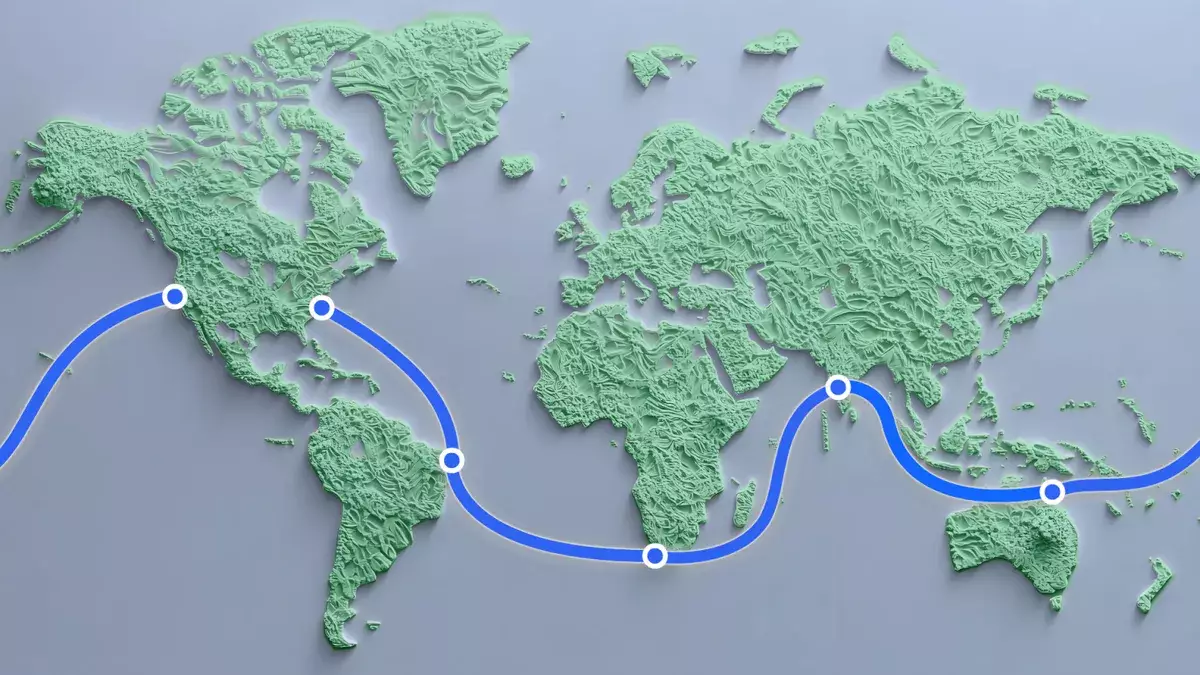In 2025, within a society dominated by the allure of wireless communication, it is easy to forget the labyrinth of physical infrastructure that undergirds our digital lives. Contrary to the rapid, seamless experiences that wireless technology promises, a staggering 98% of internet traffic is transmitted through an extensive network of undersea cables. Among the latest ventures encapsulated in this sprawling, vital network is Meta’s newly proposed undersea cable, aptly codenamed Project Waterworth. This initiative, astonishing in its ambition, aims to lay down a cable longer than the Earth’s circumference, illuminating the company’s commitment to enhancing global connectivity.
Meta’s Project Waterworth is not just a long piece of wire; it symbolizes a crucial connection between nations. With a total length nearing 31,000 miles (approximately 50,000 kilometers), the cable plans to traverse a sprawling path that connects the United States, Brazil, South Africa, India, and eventually Australia. The journey Commences on the US eastern seaboard, dipping into the waters off Brazil, heading across the Atlantic, and rounding the southern tip of Africa. It then proceeds to Mumbai, India, before making its way to Queensland, Australia, marking an impressive global interconnectedness that reflects the world’s increasing reliance on data.
The ambitious project is particularly noteworthy considering the technical challenges it faces. Installing a cable that runs not just over land but also extends up to four miles deep into the ocean represents significant engineering feats. Each segment of this intricate plan must be executed with precision, taking into account the ever-present hazards of underwater topography and human activity, such as fishing and shipping.
Described by Meta as a “multi-billion dollar, multi-year investment,” the organization’s commitment to building this undersea marvel underscores its importance in fostering faster and more reliable internet access. A core benefit is its potential to serve as a foundation for the artificial intelligence advancements of tomorrow. With the world leaning heavily into AI and burgeoning data needs, such an extensive infrastructural investment is both timely and necessary.
Meta plans to employ cutting-edge routing diversions, strategically focusing on laying the cable in deep water areas up to 7,000 meters deep. This approach not only maximizes the efficiency of cable placement but also significantly reduces the risks of damage from environmental factors, such as severe weather or human interference. Moreover, innovative burial techniques are set to be used in shallower waters to safeguard against ship anchors and other potential hazards, demonstrating a proactive approach to cable resilience.
However, the announcement of Project Waterworth does not come without its controversies. Meta’s public relations efforts have been scrutinized in recent years, particularly following CEO Mark Zuckerberg’s unconventional strategy of replacing professional fact-checkers with “community notes” on its platforms. Critics have pointed out that this shift might lead to an increase in misinformation. Despite lapses in public perception and trust, this cable initiative serves as a reminder of the concrete contributions Meta is making to the world.
In an age rife with skepticism about social media’s role and impact, it is refreshing to see a tech giant investing in foundational projects that fortify global communication. This juxtaposition of capabilities calls attention to the duality of Meta’s operational identity — a significant force in shaping digital landscapes and an investor in essential telecommunications infrastructure.
As we reflect on the impact of Project Waterworth, it becomes evident that Meta’s initiatives signal a pivotal transformation in how we think about internet accessibility and stability. The project not only aims to enhance the speed and scale of digital highways but also highlights the interconnectedness of our global society. It serves as a reminder that, despite an increasing reliance on wireless technologies, our digital world remains deeply rooted in robust and intricate physical systems. As Meta forges ahead, the hope is that such advancements will foster not only greater technological capabilities but also a more connected, informed, and cohesive global community.

